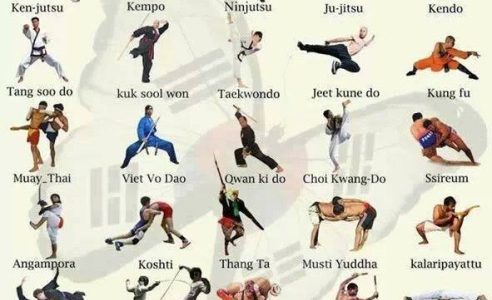Checking Out The Differences Between Typical Martial Arts And Contemporary Combat Sports
Checking Out The Differences Between Typical Martial Arts And Contemporary Combat Sports
Blog Article
Produced By-McGinnis Rocha
When you think of martial arts, do you lean more towards the traditional methods or the modern-day fight sports? Each path supplies distinct benefits and experiences, formed by their approaches and training methods. Typical martial arts emphasize individual development and self-control, while modern-day combat sports concentrate on competition and performance. Recognizing these differences can direct you in picking the appropriate method for your trip. But how do these distinctions materialize in training and approach?
The Ideology and Background Behind Traditional Martial arts
While lots of people associate martial arts with physical battle, the approach and background behind standard martial arts run much deeper. You'll find that these disciplines highlight individual development, self-control, and respect.
Originating from ancient techniques, standard martial arts were commonly established for Self-Defense and spiritual advancement. They embody principles such as equilibrium, harmony, and self-discipline, directing specialists past simple fighting skills.
As you educate, you'll not only find out techniques however likewise obtain understandings into the culture and worths that formed these arts. The rituals and customs, typically given through generations, promote a feeling of neighborhood and belonging.
The Competitive Nature of Modern Fight Sports
Modern combat sports have transformed the landscape of martial arts into a highly affordable arena, where athletes take on in an examination of ability, method, and endurance.
when to learn martial arts 'll see that competitions are often arranged with strict policies and laws, ensuring fair play and security. These events attract big target markets, sustaining the enjoyment and intensity of competitions.
Professional athletes educate carefully, not just for physical expertise yet likewise for psychological durability, knowing that every information counts in the ring. The adrenaline rush throughout competitors is apparent, as competitors push their restrictions to declare success.
Followers value the athleticism and artistry entailed, making contemporary combat sporting activities a thrilling phenomenon that remains to advance and astound lovers around the globe.
Training Approaches and Methods: A Relative Evaluation
The affordable environment of contemporary combat sporting activities needs ingenious training approaches that differ substantially from typical martial arts.
In modern training, you'll concentrate on details methods, sparring, and conditioning, typically making use of drills that imitate actual battle circumstances. You'll see an emphasis on quantifiable efficiency and constant competitors to assess your abilities.
On the other hand, standard martial arts prioritize types, katas, and philosophical mentors, typically highlighting self-control and respect over competition.
Training is normally much less intense and may involve recurring method as opposed to real-time sparring.
While both approaches construct skill and health and fitness, modern fight sporting activities provide a much more dynamic and adaptable training environment, preparing you for immediate difficulties in the ring or cage.
Select the path that straightens with your objectives and rate of interests.
Conclusion
In selecting in between standard martial arts and modern-day battle sporting activities, it truly comes down to what you value many. If you're trying to find personal growth, discipline, and a feeling of community, traditional arts could be your finest fit. Yet if you grow on competition and real-time challenges, modern-day combat sporting activities could be the means to go. Ultimately, https://www.upi.com/Entertainment_News/Movies/2023/05/23/Fist-of-Condor-Marko-Zaror/9061684517408/ offer special advantages, so it's all about straightening your training with your personal objectives and interests.
